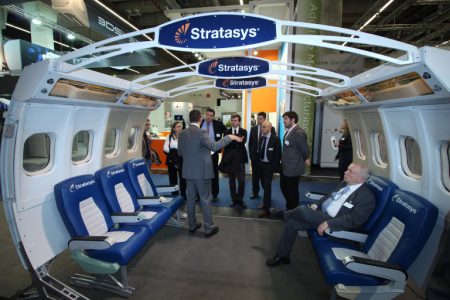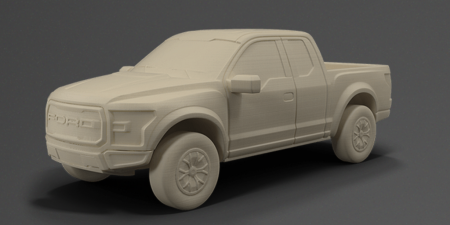August 25, 2016 – In the last week Stratasys, a 3D printing systems manufacturer announced that is working with Ford and Boeing to produce printed parts on an industrial scale. For Boeing the company is demonstrating the ability to print entire interior panels for aircraft. States Richard Garrity, Stratasys’s Americas President, “we are talking about completely changing the boundaries on size and massive improvement in speed.”
These two issues are among a number that have inhibited 3D printing or as it is known in industry parlance, additive manufacturing, from replacing the current methods used to machine and build inventories of parts. The big breakthrough that Stratasys has been able to achieve, is the development of an “Infinite-Build” printer that creates parts vertically. This means there is no limit to the size of what can be printed. Think 3D printed wind turbine vanes, ships and of course airplane and car parts.
The other inhibitor to 3D printing has been the ink. But even that is no longer an issue as new ink sources from metals to graphene to carbon filaments are now possible.
And with additive manufacturing companies like Boeing and Ford will be able to customize parts for individual customer orders because rendering a design to print will be totally digital and the printing of parts will be instantaneous.
Todd Grimm, an expert in additive manufacturing and frequent columnist writing about the technology, in a Financial Times interview is quoted as saying, “I don’t think it’s realistic in the near term to customize each car, but I think a supplier could have a different version of each aircraft for each client, if not actually customizing each individual aircraft.”
Boeing’s Phantom Works believes that the Stratasys technology will mean to the company’s manufacturing a significant reduction in aircraft weight and cost. Leo Christodoulou, Director of Engineering, Material and Structure, at Boeing describes the technology advantages, enabling the manufacture of large production of unlimited length using a stable process with considerable flexibility. At an upcoming tradeshow in Chicago, Stratasys will be presenting the “Infinite-Build” technology used to produce a printed aircraft interior such as the one seen in the image below.
For Ford the technology can be seen as useful in building custom parts, or even an entire vehicle. According to Ellen Lee, Technical Leader, Additive Manufacturing at the motor car company, Stratasys technology gives Ford the means to build large scale fixtures and parts to further streamline production.
The Infinite-Build printer is ten times faster than current 3D fabrication technologies. When combined with numerical control and milling equipment it provides infinite possibilities for an assembly process allowing for customization as needed. Roger Hart, R&D Engineering Manager at Siemens, states that a combination of its technologies along with Stratasys Infinite-Build “enables a whole list of vertical integrations that haven’t been possible until now. From material feeders, to automation equipment, to robot loaders and unloaders, we can now span the whole vertical automation framework that is necessary in factories.”










